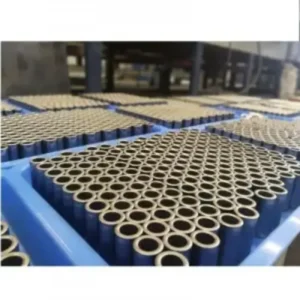The Advantages and Challenges of Sintered Gears in Transmission
In the evolving landscape of the metal sintering industry, sintered gears have emerged as a vital component in transmission systems. Known for their precision and cost-effectiveness, sintered gears offer numerous advantages, but they also come with certain challenges.
What Are Sintered Gears?
Sintered gears are produced using a powder metallurgy process known as sintering. This involves compacting metal powders into a desired shape and then heating them below the melting point to bond the particles together. The result is a gear with excellent structural integrity and precise dimensions.
Advantages of Sintered Gears in Transmission
Cost-Effectiveness
- Low Production Costs: The powder metallurgy process is highly efficient, reducing material waste and overall production costs.
- Mass Production: Sintered gears can be produced in large quantities with consistent quality, making them ideal for automotive and industrial applications.
Precision and Consistency
- High Precision: The sintering process allows for the production of gears with tight tolerances and precise dimensions.
- Consistency: Each sintered gear produced is uniform in size and quality, ensuring reliable performance in transmission systems.
Material Efficiency
- Minimal Waste: The process utilizes nearly all the raw material, leading to minimal waste compared to traditional machining methods.
- Material Versatility: Sintered gears can be made from a variety of metal powders, including iron, steel, and alloy mixtures, tailored to specific application needs.
Enhanced Properties
- Strength and Durability: Sintered gears can be designed to exhibit high strength and durability, suitable for high-load transmission applications.
- Self-Lubricating Options: Some sintered gears can be impregnated with lubricants, reducing the need for external lubrication and maintenance.
Challenges of Sintered Gears in Transmission
Initial Tooling Costs
- High Tooling Costs: The initial setup for sintering, including the creation of molds and dies, can be expensive. This can be a barrier for small production runs.
- Complex Shapes: While sintering is excellent for simple and moderately complex shapes, very complex geometries may require additional processing steps.
Material Limitations
- Porosity Issues: Sintered gears may have inherent porosity, which can affect their mechanical properties. This needs to be managed through process optimization.
- Material Selection: The range of materials suitable for sintering can be limited compared to traditional manufacturing methods, potentially restricting design flexibility.
Dimensional Accuracy
- Shrinkage Control: The sintering process involves shrinkage, which must be precisely controlled to maintain dimensional accuracy.
- Post-Processing Requirements: Some sintered gears may require secondary operations such as machining or heat treatment to achieve the desired final properties.
Applications of Sintered Gears in Transmission
Automotive Industry
- Gearboxes: Sintered gears are widely used in automotive transmissions for their cost-effectiveness and reliability.
- Differentials: Their precision and strength make them suitable for use in differential systems.
Industrial Machinery
- Robotics: The high precision and durability of sintered gears make them ideal for robotic systems and automated machinery.
- Machinery Transmissions: Sintered gears are used in various industrial transmission systems, providing efficient and reliable performance.
Conclusion
Sintered gears in transmission systems offer a range of advantages, including cost-effectiveness, precision, and material efficiency. However, they also come with challenges such as initial tooling costs, porosity issues, and the need for careful process control. By understanding these factors, industries can make informed decisions about the use of sintered gears in their transmission systems.







Reviews
There are no reviews yet.